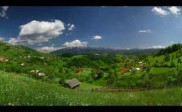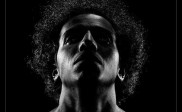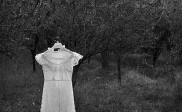How to Capture The Essence of a Protest
Photographing a protest isn’t as dangerous as covering a conflict zone but it can be as challenging to succeed in capturing great pictures that translate the moment. With the fast pace of movement in a protest and with all the rumble, it won’t be possible to take your time to compose your shot and to study lighting. Your subject is on a constant move and you need to adapt. You will be able to capture the essence of a protest if you follow some simple tips and techniques.
Gear:
You will probably see a lot of professional photojournalists on the scene using top notch cameras and expensive zoom lenses, but you shouldn’t be intimidated by that, as the camera you use doesn’t really matter. The way in which you use it, does. The camera is just a tool and, the main reason professionals use such expensive and sophisticated gear is that they need to always deliver consistent results, and for that they need equipment that leaves very little space for chance. So, you should be able to get great results out of your point and shoot camera if you concentrate on your subject rather on what you have to shoot with.
Those of you shooting with a DSLR will benefit from the fact that people will most probably take you for a photojournalist and will be more willing to let you get near and take as many photos as you need without showing any sign of disapproval.

Photo by how will i ever
Shooting tips
-Symbolism: In a protest you will have a huge amount of people and things to photograph, but a few will have a symbolic aspect. Photographs that symbolize the ideology behind the protest are usually the ones that grab the viewers’ attention the most. These can be portraits of people depicting emotions, such as anger, rage, tears, etc., or they may include signs which the protesters display to make a statement. When shooting signs, consider the audience which will view your photos. For a photo to be understood by the majority of a global audience, try to aim for signs and messages written in English and in a clear way. Also signs displaying simple and global concepts, such as “freedom” or “equality” will find more success than those with more complex or subdued messages.
When shooting portraits of protesters in attempt to capture their emotion, it’s crucial to try and isolate the subject from a cluttered background which might distract the viewer from a strong emotion. In order to isolate your subject you can fill the frame with it through getting really close or by using a long focal length. You can also work on the background through finding a background that is less crowded and more uniform like the sky, or you can use a wide aperture to blur it completely and make your subject stand out.
-Varied angles: Try to vary the angles you shoot from as much as possible. Don’t’ pick a spot and stand there shooting all your photos from the same position. Move around and find new perspectives to present your subject. You can try some low angle shots by crouching and looking up to the people, which will make them look giant. You can also find a place of a certain height to climb into and to take some shots of the whole crowd.
Lighting and composition: In a situation of a protest, it’s important that you asses the lighting situation and compose your images in a quick manner and without spending too much time on analysis. So, try following simple steps in order to guarantee consistent work. Try not to face the sun to avoid cases of silhouettes and lens flare, and when composing, fill the frame with your subject and always get rid of any distracting elements that might disrupt the balance of a composition.
Final thoughts:
-Shoot as much as possible, so that you will have more comfort in selecting the best shots later on
-Bring spare batteries and memory cards. You don’t want to run out of storage space or battery energy in the middle of a protest. Bring, Spare storage and batteries with you, and make sure to fully charge the battery in your camera and to format its card before leaving home.
– Don’t put yourself in dangerous situations. Protests aren’t always peaceful and they may take place in countries where human rights have little importance. So try to not put yourself in a situation that might bring you any harm. A good way to avoid getting into trouble when shooting protests is to always keep on moving and to not just stick t one spot. Also, if you can move in groups with other photographers, it would be better.
– Consider taking some snacks and some water with you, protests can run for a long period of time, during which you won’t have time to look for a place to eat and drink.

Photo by ankor

Photo by Neno°

Photo by looking4poetry




